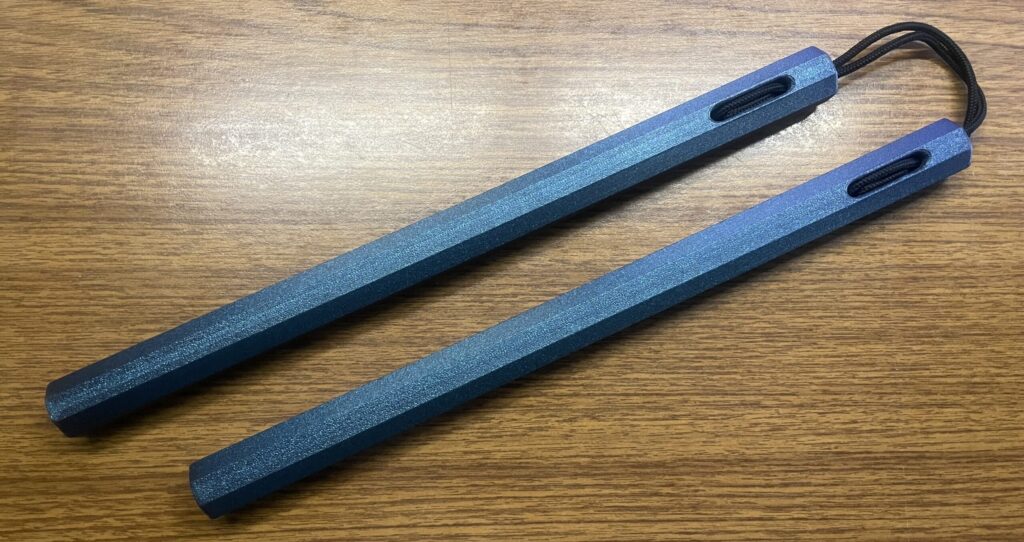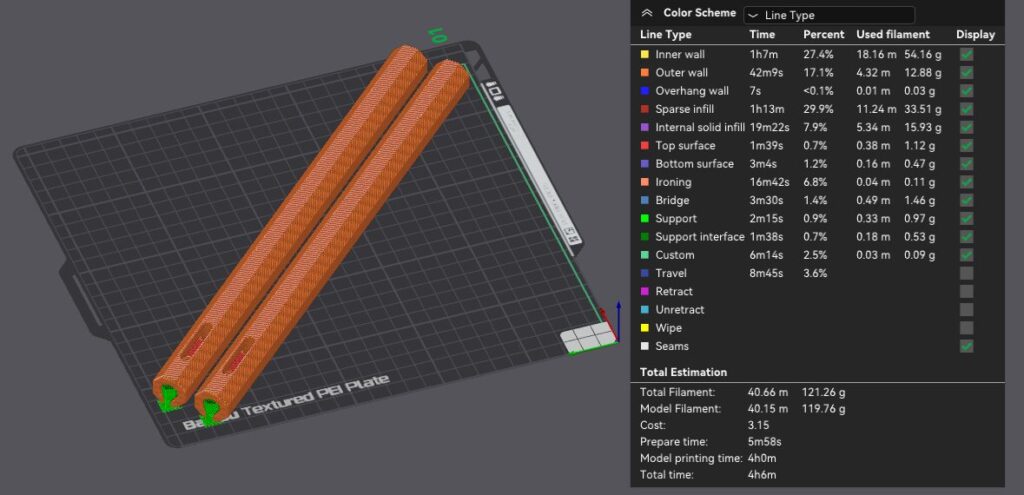Introduction

3D printing has revolutionized the way we create custom tools and accessories, and as a martial arts enthusiast, I wanted to push the boundaries of traditional training weapons. That’s how I came up with the idea of designing and 3D printing my own set of hexagonal nunchucks. In this blog post, I’ll walk you through the design process, the printing challenges, and the final results. I’ve also included images detailing the print quality and the finished product, along with links to the project files on MakerWorld so you can create your own!
The Inspiration
Nunchucks have a long-standing history in martial arts, traditionally made from wood or metal. I wanted to experiment with a new, modern twist—customizing them with a unique hexagonal shape for better grip and aesthetics. This design also provides a fresh take on weight distribution and durability when made with 3D-printed materials.
Design and Printing Process
I started by designing the nunchucks in CAD software, carefully considering dimensions, ergonomics, and durability. The hexagonal shape required precise modeling to ensure a comfortable grip and smooth rotation when in use.

Once the design was finalized, I selected a strong yet lightweight filament to ensure the nunchucks would be both functional and durable. The printing process had its challenges, including layer adhesion and optimizing infill settings to balance weight and strength. After several test prints and tweaks, I achieved a result that felt just right in terms of weight and handling.
Printing Challenges and Adjustments
- Layer Adhesion Issues: Initially, I faced some warping at the edges due to the hexagonal shape, which I resolved by adjusting bed temperature and adding a brim.
- Strength vs. Weight Balance: Too much infill made them heavy, while too little compromised durability. I found that 0.2mm layer height, 5 walls, and 21% infill provided the perfect balance. The set in the image above is printed with FlashForge Burnt Titanium HS PET-G
- Post-Processing: Removal of the supports in the stringing area required a small bit of sanding. Play with the rope length you use to adjust to your preferences. Too long or short will make palm spins difficult.
Final Outcome and Performance
The final 3D-printed nunchucks turned out better than I had imagined. The hexagonal grip feels secure, and the material holds up well during training. While not intended for high-impact sparring, they are excellent for practicing forms and techniques safely. Plus, they make for a great conversation starter in the maker and martial arts communities!

Note: The thinner of the two designs in the project requires 325 Paracord or smaller. The larger version works with the more common 550 paracord.
Download the Files and Make Your Own
I’m sharing the design files for these custom hexagonal nunchucks on MakerWorld so you can print your own and experiment with different materials or modifications. You can access the project here: MakerWorld.
Conclusion
This project has been an exciting blend of martial arts passion and 3D printing innovation. Whether you’re a martial artist looking to personalize your training gear or a maker interested in unique functional prints, I encourage you to try this design out and make it your own. Let me know in the comments if you print your own and what modifications you make!
Leave a Reply